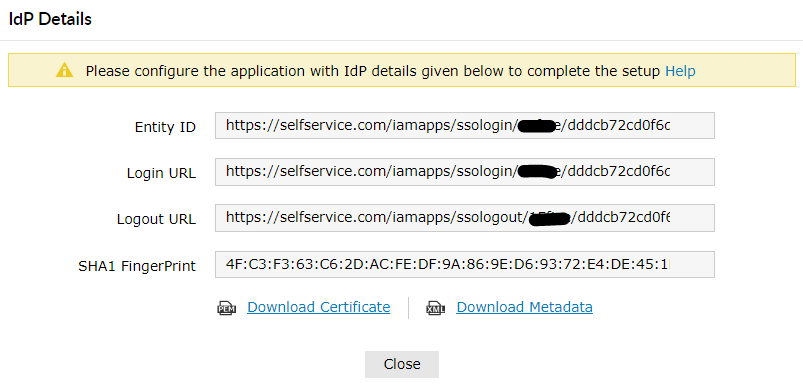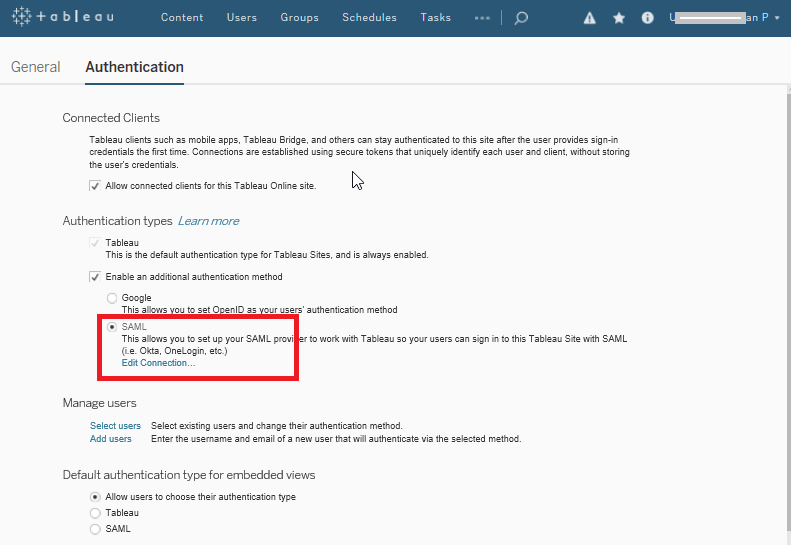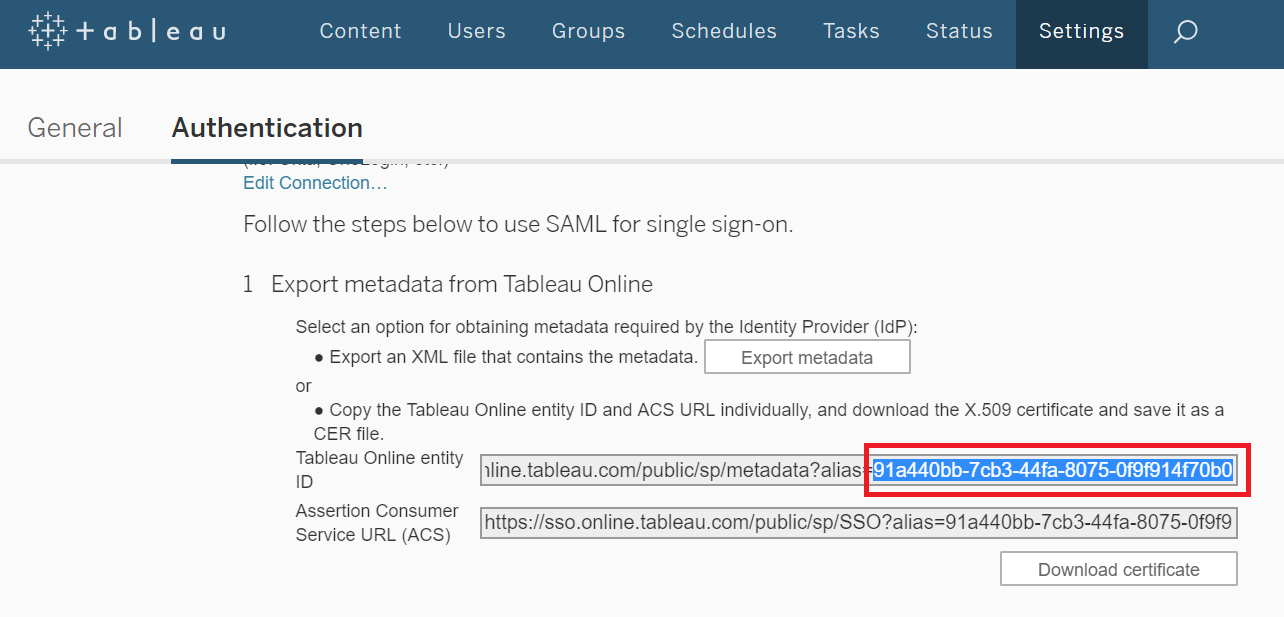Configuring SAML SSO for Tableau
These steps will guide you through setting up the single sign-on functionality between ADSelfService Plus and Tableau.
Prerequisite
-
Log in to ADSelfService Plus as an administrator.
- Navigate to Configuration → Self-Service → Password Sync/Single Sign On → Add Application, and select tableau from the applications displayed.
Note: You can also find tableau application that you need from the search bar located in the left pane or the alphabet wise navigation option in the right pane.
-
Click IdP details in the top-right corner of the screen.
-
In the pop-up screen that appears, click Download Metadata and save it.

Tableau (Service Provider) configuration steps
-
Now, log in to your Tableau administrator account.
-
Navigate to Settings → Authentication.
-
Under the Authentication types section, select Enable an additional authentication method.
-
Select SAML and click Edit Connection.

-
In Export metadata from Tableau Online, copy the value that appear after “alias=” in the Tableau Online entity ID field and save it. This value will serve as the Account ID that you need to input in ADSelfService Plus.

-
In Import metadata file into Tableau Online, click Browse and select the metadata file you saved in Step 4 of Prerequisite.
-
Click Test Connection and see if the ADSelfService Plus login page successfully opens. If it doesn’t check whether ADSelfService Plus is running.
-
In Match Attributes section, change the value of
-
email attribute to mail.
-
First name to first_name.
-
Last name to last_name.
and click Apply.
-
In Manage Users, click Select users. Select the users for whom you want to enable SSO. Click Actions → Authentication and select newly created sso configuration. Click Update.
ADSelfService Plus (Identity Provider) configuration steps
-
Now, switch to ADSelfService Plus’ Tableau configuration page.
-
Enter the Application Name and Description.
-
In the Assign Policies field, select the policies for which SSO need to be enabled.
Note:ADSelfService Plus allows you to create OU and group-based policies for your AD domains. To create a policy, go to Configuration → Self-Service → Policy Configuration → Add New Policy.
-
Select Enable Single Sign-On.
-
Enter the Domain Name of your tableau account. For example, if you use johndoe@thinktodaytech.com to log in to tableau, then thinktodaytech.com is the domain name.
-
In the Account ID field, enter the value you had copied in Step 5 of Tableau configuration.
- In the Name ID Format field, choose the format for the user login attribute value specific to the application.
Note: Use Unspecified as the default option if you are unsure about the format of the login attribute value used by the application
-
Click Add Application
Your users should now be able to sign in to Tableau Online through ADSelfService Plus.
Note:
For Tableau online, both IdP-initiated and SP-initiated flows are supported.
Don't see what you're looking for?
-
Visit our community
Post your questions in the forum.
-
Request additional resources
Send us your requirements.
-
Need implementation assistance?
Try OnboardPro


